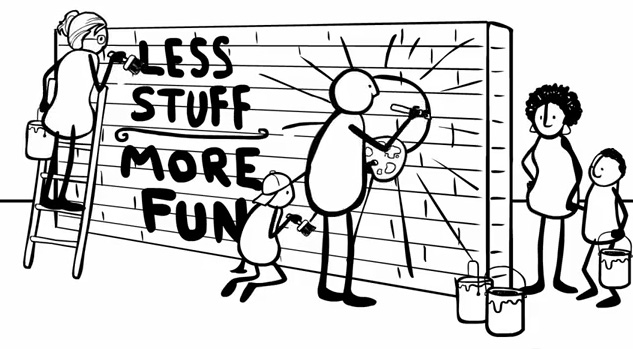
Stuff: The Solution is not for Sale
During the Stone Age, Homo habilis apparently created and used tools. It could be argued that this was the beginning of man’s affinity for stuff. Tools were, and are, valuable and worth carting around from place to place. Speaking of carting, it’s stuff that was the impetus behind the invention of the wheel in the late Neolithic era. Wheels were used to make pottery — ahem, more stuff — and to build horse-driven chariots to carry stuff.
While tools and wheels are pretty fundamental items, many of the things we purchase today are not as necessary. At Mountainfilm in Telluride 2012, we showed Living Tiny, a film about downsizing living spaces. In it, one character says, “ People like having lots of stuff, Americans in particular. Ultimately, you can only occupy 12 square feet of space at a time. Everything else is just a place to keep your stuff.”
Another 2011 Mountainfilm documentary, Stuff Everywhere, demonstrated this concept as Judith de Leeuw, counted every item from her apartment, eventually renting a warehouse to lay it all out for inventory, piece by crazy piece.
We talk about how to shop responsibly: buy green, buy only what you need, and recycle the waste. But stuff — even some green stuff — is problematic: pollution, factory slave workers, planned obsolescence, etc. The solution to these problems can’t be bought responsibly.
So what’s the solution? The Story of Stuff Project was hoping you would ask.


